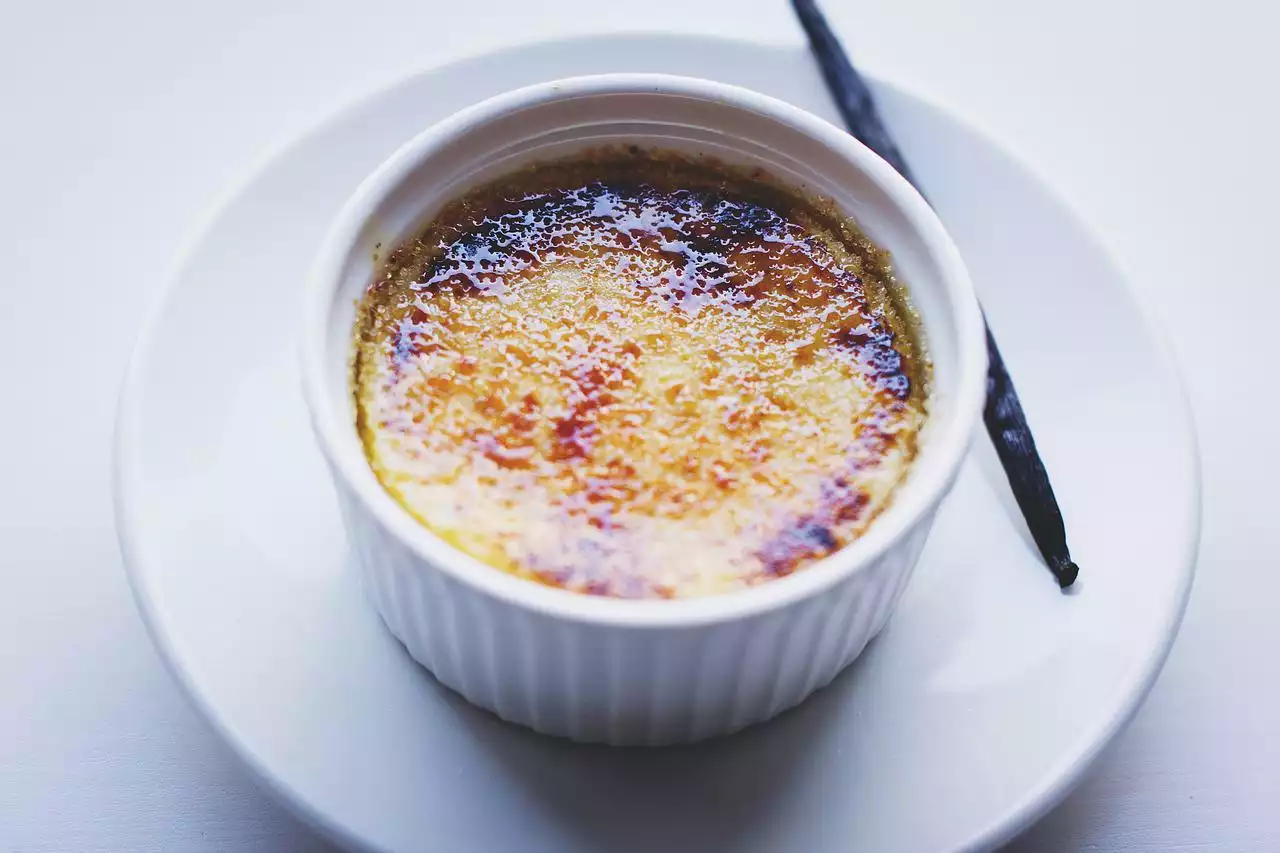Crème Brule is perhaps the most iconic French baking speciality, and you’ve probably had it without even knowing it. The name itself may not be French, but its origins are… Or are they? If you love this rich, chocolatey custard dessert and you’re craving for more, don’t worry, you’re not alone. The etymology of Crème Brule is a topic of much debate. Some say it was first made in Switzerland in the 15th century. Others claim it originated in France in the 19th century. So, is it French or Swiss, English, Spanish? Well, it’s a bit of all. We’re going to investigate the origins of this well loved dessert, while also giving you some tips to make it at home.
Where Is Crème Brule From?
Whichever country you think of when you think of crème brulee, Switzerland, France, or the UK, you’re right. It’s all three. The dessert originated in Switzerland in the 18th century and was named “Krem Brulee,” or “crem brulee” in Swiss. The Swiss also believe they are the ones who invented the recipe with milk, egg yolks, and sugar as its primary ingredients. The French and the English claim they’re the ones who brought the custard dessert to a whole new level with their signature vanilla flavor.
The English Connection
English recipes for crème brulee date back to the 19th century but the dessert originated in Switzerland. When the French sweet tooth went looking for a special dessert to eat in their country, they stumbled upon Swiss custard. Thus, the custard was brought to France, where it became the quintessential part of the French dessert tradition. However, now that the dessert is so popular in the U.S., there are many English recipes for it. Indeed, the most popular English recipe for crème brulee is based on the Swiss original.
The Swiss Connection
The Swiss are proud of the fact that they were the first to bring the dessert crème brulee to the world. Indeed, there are several Swiss towns that claim to be the birthplace of crème brulee. However, the exact recipe for the custard dessert is not known. Some Swiss claim the recipe for crème brulee is a closely guarded family secret. Some say the secret recipe is lost. But what is certain is that crème brulee is named after the town of Geneva, where it originated. The French claim they are not the ones who brought the custard dessert to Switzerland. Indeed, crème brulee was invented in Switzerland before it was brought to France. The two countries have even gone to court over the origins of crème brulee.
The Spanish Connection
Crème brulee is a dessert that reminds you of the best parts of Spain: warm, creamy desserts with a nice kick of alcohol. The custard dessert is believed to be the result of a collaboration between Spanish and Swiss bakers. Indeed, crème brulee is most popular in Spain, and the Spanish call it “Bizcocho Condensado.” The Spanish say the dessert was first created in the town of Malaga, but it was first served at the Hotel Barcelona.
Why Is Crème Brule So Popular?
As we’ve already learned, crème brulee is a relatively new dessert in the world of baking. But it’s already become a popular name in the baking world. As a result, there are many different recipes for crème brulee. Most crème brulees are made with vanilla, but you can also make them with lemon or rum flavoring. Vanilla is the most common flavoring used in these custards, but there are also many other flavors to choose from, including hazelnut, coffee, and chocolate flavored ones. The dessert can be as simple as dessert and a sprinkle of cocoa powder. Or you can go all out with ice cream, fruit, and whipped cream on top.
Tips for How to Make Crème Brule at Home
- Make sure your oven is very hot. The higher the heat, the quicker you’ll get the custard to caramelize. Set your oven temperature to a maximum of 425 degrees Fahrenheit. - Make sure you use a very heavy pan. The heavier the pan, the less likely the custard will bubble up or spill over. - When baking, leave the oven door open slightly. This will allow some of the heat to escape. - When you take the crème brulee out of the oven, let it cool for a few minutes and then remove the pan. This will allow the custard to cool quickly so it doesn’t overcook and bubble up again.
Final Words: Why France is the Best Country for Dessert
Crème Brule may be a Swiss dessert, but it’s beloved all over the world. It’s rich, gooey, and creamy. It’s also pretty easy to make, especially if you use a custard sauce mix. This dessert is best served warm. If you’ve never tried it, you’re in for a treat.


 There is a Boom in Dental Tourism
There is a Boom in Dental Tourism Are All-Inclusive Holidays worth it?
Are All-Inclusive Holidays worth it?
 Unwrap the Perfect Travel Gifts: Beauty, Fashion, and Accessories for the Adventurous Women in Your Life
Unwrap the Perfect Travel Gifts: Beauty, Fashion, and Accessories for the Adventurous Women in Your Life The Story of the Origins of Peach Melba
The Story of the Origins of Peach Melba How did Baked Alaska get its Name?
How did Baked Alaska get its Name?